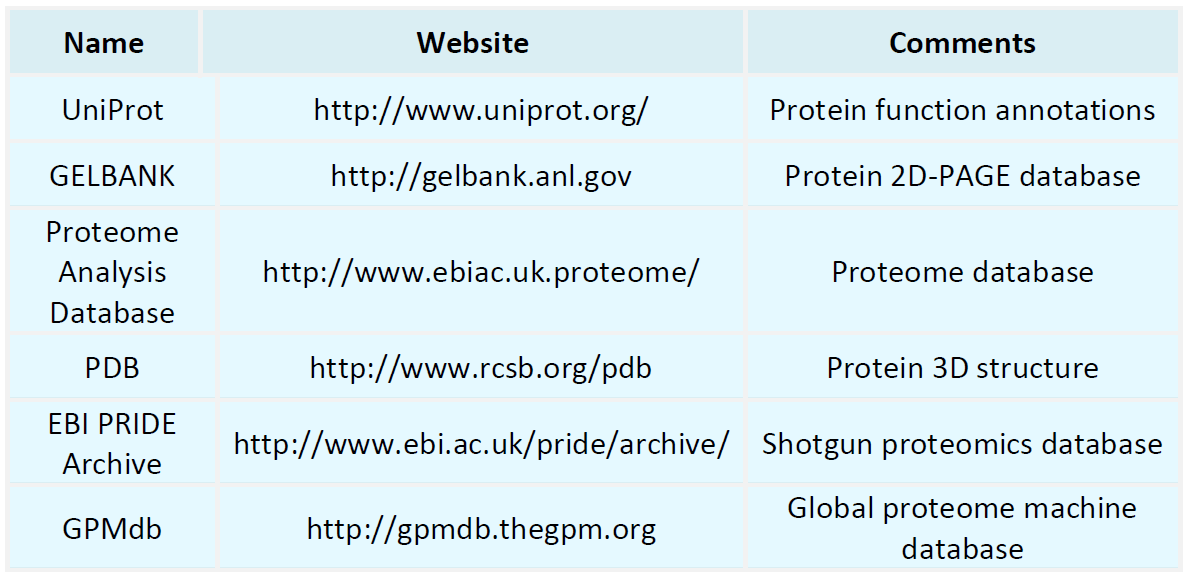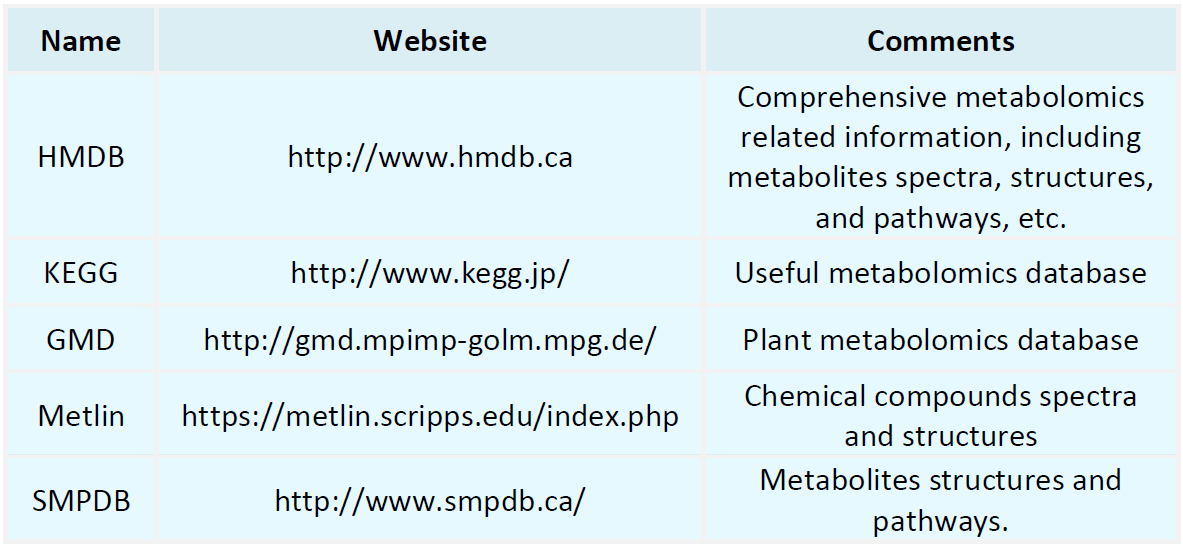Resources
Proteomics Databases

Metabolomics Databases

-
• Optimization of Protein Lipoylation Modification Detection Method
Accurate protein lipoylation modification detection is of great significance for studying its biological functions and disease mechanisms. Protein modification refers to the process of altering the properties of a protein molecule by adding chemical groups. Lipoylation modification refers to the process of regulating the function and localization of proteins by attaching fatty acid groups to protein molecules. Lipoylation modification plays a crucial role in biological processes such as cell signaling......
-
• Revealing Biomolecular Composition via Primary Protein Structure Analysis
Protein is one of the most important biomolecules in living organisms, constituting the basic building blocks of cells and performing crucial functions in various biological activities. The primary structure of a protein, which refers to the amino acid sequence, is the cornerstone for understanding its fundamental composition. This article will provide a detailed discussion on the primary structure of proteins and explore its significance in deciphering the basic constituents of biomolecules.
-
• Assessing Glycosylation's Impact on Protein Quantification via High Mannose Analysis
Glycosylation is one of the important forms of protein modification, which has a significant impact on the function and stability of proteins. The type and location of glycosylation modification can profoundly affect the structure and function of proteins. High mannose type is a common type of glycosylation modification, and its importance in protein research is increasingly recognized and valued.
-
• Analysis Workflow for Peptide Amino Acid Sequencing via Mass Spectrometry
In the field of biopharmaceuticals, mass spectrometry is a commonly used technique for determining the amino acid sequence of proteins and peptides. The analysis process of determining the amino acid sequence of a peptide segment using mass spectrometry includes sample preparation, mass spectrometer analysis, and data interpretation. This article will discuss in detail this analysis process to help you understand the application of mass spectrometry in amino acid sequence determination.
-
• Deciphering the Link Between Protein Folding and Redox Regulation via Disulfide Bond Analysis
Proteins are important molecular machines in organisms, and their structure and function depend on the correct folding state. The folding process of proteins is influenced by the regulation of cellular redox reactions. Disulfide bonds, as one of the key factors stabilizing protein folding, play an important role. Protein disulfide bond detection is an important tool that reveals the relationship between protein folding and redox regulation.
-
• Phosphoprotein Expression Profiling Analysis
Cellular signal transduction is a key process involved in the transmission and regulation of information both inside and outside the cell, and it is closely associated with many biological processes and disease occurrences. Phosphorylation, as an important signaling transduction mechanism, plays a crucial regulatory role in cellular signal transduction. Phosphorylated proteins refer to protein molecules that undergo phosphorylation modification.
-
• Revealing Cellular Signaling Networks via Phosphorylation Sequencing
Cellular signal transduction is a key process in the transmission and regulation of information inside and outside cells, which regulates the physiological functions and adaptability of cells. Protein phosphorylation in cells is an important way of signal transduction and plays a crucial role in regulating cellular signal transduction. The location, extent, and timing of protein phosphorylation regulate the activity and effects of multiple signaling pathways within the cell.
-
• Exploring Cellular Metabolic Regulation via Phosphoproteomics
Cellular metabolism regulation is an important mechanism for maintaining cellular homeostasis and normal functioning. Protein phosphorylation, as an important signaling pathway, plays a crucial role in cellular metabolism regulation. Phosphoproteomics, as an emerging technology, provides an important tool for decoding the key codes of cellular metabolism regulation.
-
• New Perspectives on Protein Ubiquitination Modifications
Ubiquitination modification is an important protein regulatory mechanism in cells, playing a key role in regulating protein stability, cell signaling, DNA repair, and other biological processes. In recent years, with the development of ubiquitination proteomics technology, we can gain a deep understanding of the panorama and function of protein ubiquitination modification.
-
• How to Select the Optimal Techniques for Ubiquitinomics Analysis?
Ubiquitinomics analysis aims to comprehensively unravel the network of protein ubiquitination modifications, providing important clues to understand its regulatory mechanisms. This article will discuss how to select the optimal techniques and methods for ubiquitinomics analysis.
How to order?







